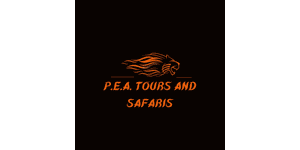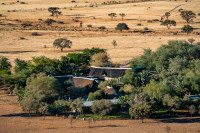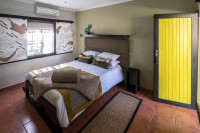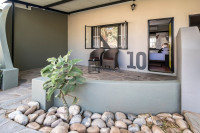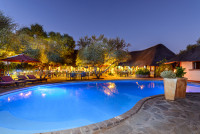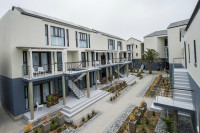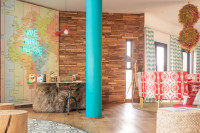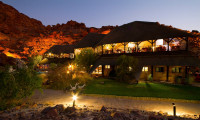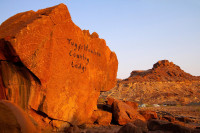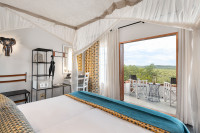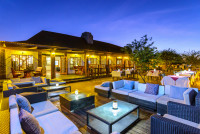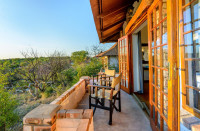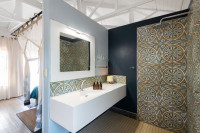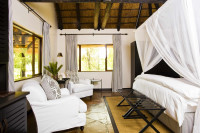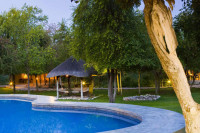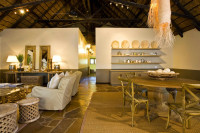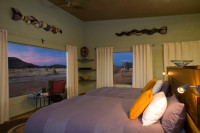
$6,600 pp (USD)
2 travelers on Start dateArrival
Arrival

Day 1
Namib Desert
Namib Desert
Your guide will pick you up either from the airport or accommodation in Windhoek. You will drive southwards to the desert through scenic landscapes that may include mountain passes depending on the road being used. You will have a lunch stop along the way to Sossusvlei. You will be in the Sossusvlei area before sunset and enjoy the sundowner drive in the desert.
- Main Destination:
- Sossusvlei (Sand Dunes)
- Accommodation:
- Namib Desert Lodge
- Meals & Drinks:

Day 2
Swakopmund
Swakopmund
You will have an early morning start and get into the Namib Naukluft Park. The early morning light shining on the red sand dunes gives one great photographic opportunities and memories of the magnificent Namib Desert. Various wildlife thriving in this area include gemsbok, springbok, brown hyena, and black-backed Jackal among others. You will visit the most photographed sand dune in the area, Dune 45. Depending on your energy levels, climbing one of the highest sand dunes in the area, the Big Daddy, is quite fun. A visit to the Dead Vlei is worthwhile. After a visit to the Sossusvlei, you will then visit the Sesriem Canyon. It is about a kilometer long and 30 (100ft) meters deep. After lunch, you will make your way to the Coast past scenic Gaub and Kuiseb passes.
You will go past Walvis Bay Lagoon for some interesting water birds including flamingoes. You will then stay overnight in Swakopmund and enjoy some dinner in some of the best restaurants.
- Main Destination:
- Swakopmund (City)
- Accommodation:
- The Delight Swakopmund
- Meals & Drinks:

Day 3
Swakopmund
Swakopmund
Catamaran and Sandwich Harbour Combo.
This takes the whole day and is done in Walvis Bay. Your guide will drive you to the Waterfront in Walvis Bay after breakfast. You'll start with the Catamaran tour and might get entertained by Cape fur seals and pelicans on the cruise. Depending on the time of the year and luck one might encounter whales, dolphins, leatherback turtles, and seals.
After lunch, you'll proceed to the Sandwich Harbour, on an adventure of 4 x 4 sand dune driving. This is one of the 5 Ramsar sites (Wetlands of International Importance) where the dunes meet the sea. The coastal desert environment is characterized by pale sand dunes with traces of black shades of magnetite, implying they are of greater aesthetic value as well as being a photographer’s playground. You might encounter black-backed jackal, oryx, and springboks on your way in dry riverbeds. In the wetlands and mudflats, there is a great diversity of sea birds.
.
- Main Destination:
- Swakopmund (City)
- Accommodation:
- The Delight Swakopmund
- Meals & Drinks:

Day 4
Twyfelfontein
Twyfelfontein
You will leave the Coastal environment and drive inland past a couple of shipwrecks. On this day, you will visit the Cape Cross Seal Reserve. This is a 60sq km reserve and has the largest seal colony in the world, with numbers up to 240,000 at a given time. After this activity, you will then go through the Skeleton Coast National Park. The Namibian Skeleton Coast National Park is renowned for its cold and unpredictable Benguela Current of the Atlantic Ocean that contends with the dune and desert landscape. It is described as the world’s largest ship cemetery because of various shipwrecks found along the coast. This is a rarely visited park in Namibia with eye-catching landscapes that range from sweeping vistas of windswept smaller sand dunes to rugged canyons with walls of richly colored rocks and extensive mountain ranges. Because of the harshness of the area, these animals do not occur in huge numbers and are not very easily spotted, so keep your eyes peeled.
- Main Destination:
- Twyfelfontein (Rock Art)
- Accommodation:
- Twyfelfontein Country Lodge
- Meals & Drinks:

Day 5
Twyfelfontein
Twyfelfontein
You will explore the Aba-Huab and Huab Rivers in search of desert-adapted wildlife including elephants, black rhinos, oryx, springbok, and giraffes among others. Wildlife here is not in a closed ecosystem, implying there are no fences limiting their movement. This is one of the last remaining true African wildernesses where humans and wildlife coexist and have to share rather scarce resources like surface water. After lunch, you will visit the Bushman Rock Engravings around Twyfelfontein. This area was declared a UNESCO World Heritage Site in 2007 and consists of over 40,000 rock engravings done by the San people 2,000 years ago. It is a 45-minute walk conducted by local guides.
- Main Destination:
- Twyfelfontein (Rock Art)
- Accommodation:
- Twyfelfontein Country Lodge
- Meals & Drinks:

Day 6
Etosha National Park, Southern Side
Etosha National Park, Southern Side
After breakfast, you will proceed to the Petrified Forest. This is a geological formation that happened 280 million years ago. Huge trees were carried by a river and buried here. The sand was deposited around them, creating ideal conditions for the cells of the wood to be replaced by silica and thus become petrified. It is thought these trees are Dadoxylon arberi, the same tree responsible for coal fields in Europe. This is a half an hour's walk done by knowledgeable local guides. You will proceed to Etosha National Park. You should be in time for an afternoon game drive.
- Main Destination:
- Etosha National Park
- Accommodation:
- Etosha Safari Lodge
- Meals & Drinks:

Day 7
Eastern Etosha National Park
Eastern Etosha National Park
You will have a full-day game drive in your own vehicle. This includes a lunch stop somewhere in the park. This park is semi-arid hence animals depend on contact springs, water level springs, artesian springs, and a couple of man-made waterholes for water. You will be visiting these waterholes all day long as you drive from the southern to the eastern part of the park. There are 114 mammal species and over 350 bird species. Etosha means great white place, referring to the 4800 sq km salt pan that covers 23% of the park’s surface area. Mammals include rhinos, lions, leopards, cheetahs, elephants, plains zebras, Hartmann’s mountain zebras, southern giraffe subs angolensis, elands, gemsboks, African wild cats, spotted and brown hyenas among other animals. The park is unique in its own way as the concentration and diversity around waterholes in the dry season are magnificent, allowing one to see animal dramas unfolding as they take turns to quench their thirst.
- Main Destination:
- Eastern Etosha National Park
- Accommodation:
- Mushara Lodge
- Meals & Drinks:

Day 8
Eastern Etosha National Park
Eastern Etosha National Park
You will have more of a relaxed day of morning and afternoon game drives in the eastern part of Etosha, with a 3-to-4-hour break in between. This implies you will be back at the lodge around mid-day and go back into the park in the late afternoon. You will enjoy the siesta or swimming pool and the tranquility of the lodge. Besides the 114 mammals found here, 340 bird species are known to occur in Etosha National Park. About a third are migratory including European bee-eaters, and several species of waders. Ten of Etosha’s 35 raptor species are migratory. Those most commonly seen are lappet-faced vultures, white-backed vultures, hooded vultures, and on very rare occasions, Cape, Egyptian, and Palm-nut vultures have been recorded. 8 species of owls have been recorded, including pearl-spotted owlets and white-faced scops-owl.
- Main Destination:
- Eastern Etosha National Park
- Accommodation:
- Mushara Lodge
- Meals & Drinks:

Day 9
Okonjima Private Nature Reserve
Okonjima Private Nature Reserve
After an early morning start, you will make your way to Okonjima Nature Reserve, which is the home of the AfriCat Foundation. Founded in 1993, the AfriCat Foundation is primarily dedicated to the conservation of large carnivores. The Foundation lies on a 22,000-hectare Okonjima Private Game Reserve. Before lunch, you will visit the center and learn more about Namibia’s carnivores and their fight for survival and the human-wildlife conflict challenges that face both man and carnivore. Both Okonjima and AfriCat are dedicated to creating conservation awareness through environmental education at all ages and levels, rehabilitation and reintroduction programs, and conducting constructive wildlife research. You will get a chance to see the ambassador cheetahs during this tour.
You will go for leopard tracking in the afternoon.
- Main Destination:
- Okonjima Private Nature Reserve
- Accommodation:
- Okonjima Plains Camp
- Meals & Drinks:

Day 10
Windhoek
Windhoek
Depending on your outbound flight, you will either leave early or do a morning game drive at Okonjima and stay overnight in Windhoek. This marks the end of your trip.
- Main Destination:
- Windhoek (City)
- Accommodation:
- No accommodation (End of tour)
- Meals & Drinks:

